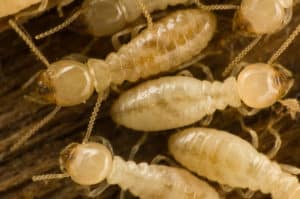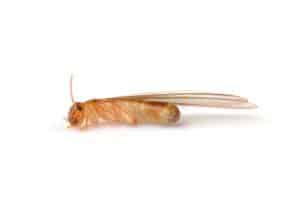Termites
Termites: Destruction Incarnate
Termites are a widely-feared, highly destructive force-of-nature. Without so much as a stinger, these tunneling terrors have established themselves as the most feared pest among homeowners due to their insatiable appetite for cellulose, an organic compound most commonly found in wood, as well as algae, fungus, and lichen. This is true for the vast majority of the nearly 3,000 different species of termite found across the globe.
North America is home to 50 species of termites, the majority of which reside in the southernmost points of the US due to their preference of warmer climates. Those that live further north are referred to as “subterranean termites”, as they spend the entirety of their lives underground. By seeking shelter underground, these species have been able to spread throughout the US, inhabiting every state except Alaska.
Underground living provides more benefits to termites than just weather resistance; it also shields them from sunlight and open air. This is important, because subterranean termites will quickly dry up and die if exposed to open air or direct sunlight. Subterranean termites are almost never seen out in the open due to these sensitivities; The exception to this is the termite swarmer, which is a winged termite variant whose specific role is to fly away from their parent colony to begin a new colony elsewhere. 
Subterranean termites begin exhibiting this “swarming” behavior at the onset of spring, continuing into the summer months. Once a swarmer has found a suitable location, they quickly find a mate and bury themselves together, at which point they begin producing the first brood of the new colony. The first workers of the colony go to work immediately, establishing cellulose supply lines and expanding the architecture of the nest to accommodate the rapidly expanding colony.
When a worker discovers a source of cellulose, they alert other workers and begin large-scale consumption, tunneling into the cellulose as they work. In the event the cellulose is not immediately accessible from underground, the workers will construct a special transportation tunnel, sometimes called a “mud tube”, from ground level to the source of the cellulose. These mud tubes have the appearance of a mundane, irregular cylinder of dirt leading from ground level up to a source of cellulose. Mud tubes are commonly found on the concrete foundations of homes, leading under the cladding and into the wooden structure of the house. If you’ve found a mud tube on the exterior of your home, it can mean one of two things: either there were active termites at one point in time, or there are presently active termites in the structure of your home. In both cases, we here at All Solutions Pest Control recommend calling us immediately to schedule a termite inspection.
Once we’ve inspected the property and determined where the termite activity is taking place, we’ll be able to begin installation of our SENTRICON system. SENTRICON uses a scientifically engineered bait to enter the Termites’ food chain, effectively delivering the treatment to the entire colony, and decimating the termite queen and the colony for good.
While termites are highly destructive and incredibly sneaky, it is still possible to take steps to make your home less susceptible to a termite infestation. Below are some common termite habits, as well as some helpful tips and tricks for termite-proofing your home.

Get a Free Estimate!
Habits
Prevention and Tips
Any wood pile/ wood rack should be positioned a safe distance from the home. Termites are attracted to sources of wood, especially those in direct contact with the ground.
Mulch causes the soil underneath it to retain moisture, which termites will seek out. If you have mulch beds adjacent to your foundation, consider leaving a strip of exposed earth between the mulch and the foundation.
The Sentricon system we provide offers unparalleled preventative protection from termite invaders. Sentricon is the only treatment system proven to eradicate entire termite colonies.
Request A Quote Today
...
Contact Us
Location :
44 Jason Ct, St Charles, MO 63304